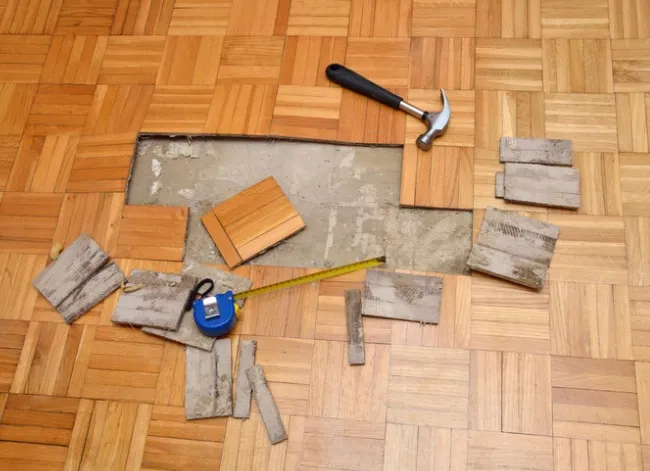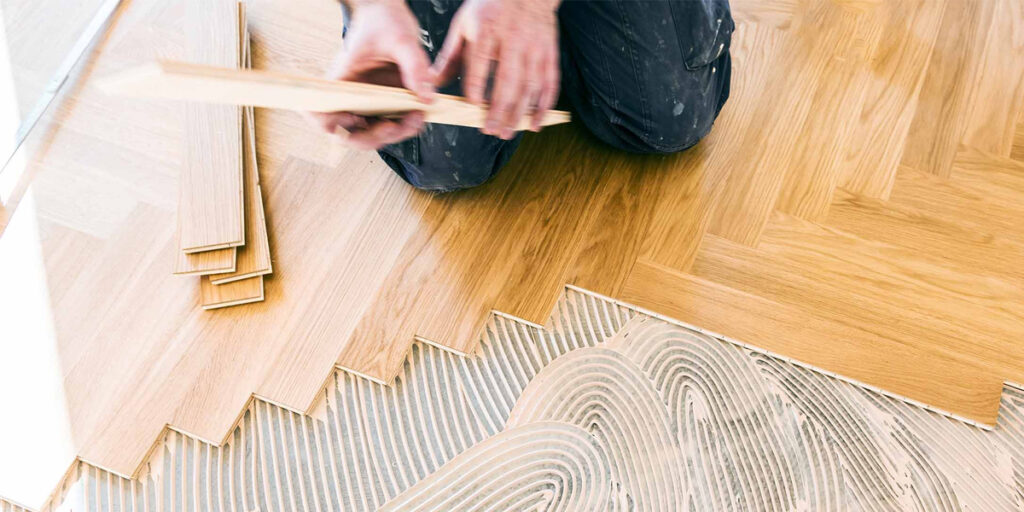Flooring is a key component of home decoration, directly affecting living comfort and the aesthetic appeal of a house. However, after long-term use, flooring is inevitably prone to problems such as wear, deformation, and cracking. If not repaired promptly, these issues not only harm the appearance but may also pose safety risks. This article details common flooring problems, repair methods, and preventive measures to help extend your flooring’s lifespan and maintain a clean, comfortable home environment.

I. Common Flooring Issues and Cause Analysis
- Flooring Cracking or Deformation
Causes:
- Excessive or insufficient humidity (solid wood flooring is prone to swelling from moisture absorption or cracking from shrinkage due to dryness).
- Lack of expansion joints during installation, leading to 挤压 deformation (extrusion deformation) due to thermal expansion and contraction.
- Long-term direct sunlight, causing local drying and warping.
- Flooring Scratches or Wear
Causes:
- Scratches from moving furniture, high-heeled shoes, or pet claws.
- Failure to wax or maintain regularly, resulting in wear of the surface protective layer.
- Loose Flooring or Squeaking Noises
Causes:
- Uneven base layer or unstable installation.
- Aging of keels or adhesive, leading to poor adhesion between flooring and the ground.
- Flooring Mildew or Discoloration
Causes:
- Long-term moisture exposure (e.g., water pipe leaks, incomplete drying after mopping).
- Low-quality flooring or lack of moisture-proof treatment.
II. Repair Methods for Different Flooring Types
1.Solid Wood Flooring Repair
- Small-area scratches:
Fill with floor wax or repair paste, then smooth with fine sandpaper. - Cracking or deformation:
If deformation is minor, remove the flooring, adjust humidity, and reinstall.
If severely deformed, replace with new flooring. - Loose or squeaking flooring:
Inject specialized floor adhesive into gaps or refasten the keels.
2.Laminate Flooring Repair
- Surface wear:
Touch up with a floor repair pen or replace the damaged section locally. - Water damage:
Immediately remove the flooring, dry the base layer, and replace if deformed.
3.Tile Flooring Repair
- Hollow tiles:
Break the hollow tile, clean old cement, and re-lay. - Tile cracks:
Fill with tile repair agent or replace the entire tile.
III. Professional Tools and Materials for Flooring Repair
| Repair Item | Required Tools/Materials |
|---|---|
| Filling scratches | Floor wax, repair paste, sandpaper |
| Repairing cracks | Wood glue, clamps, replacement flooring |
| Securing loose flooring | Floor adhesive, screwdriver, keel nails |
| Replacing tiles | Tile adhesive, rubber mallet, cutting machine |
IV. How to Prevent Flooring Damage?
- Control indoor humidity (40%-60% is optimal) using humidifiers or dehumidifiers.
- Avoid direct sunlight by installing curtains or using UV-resistant floor paint.
- Regular cleaning and maintenance:
- Wax solid wood flooring once every six months.
- For laminate flooring, avoid mopping with excessive water; use a slightly damp mop.
- Furniture protection:
- Attach soft pads to table and chair legs to prevent scratches.
- Use protective pads when moving heavy objects.
V. When to Call Professional Repairers?
- Large-area waterlogging or mildew requiring complete replacement.
- Issues with underfloor heating flooring (involving concealed works, requiring professionals).
- Unidentifiable causes of problems or recurring issues after self-repair.

Conclusion
Flooring repair is not overly difficult—many minor issues can be resolved independently with the right methods. However, for severe damage or special materials (e.g., underfloor heating flooring), professional help is recommended to avoid greater losses from improper operation. Regular maintenance combined with correct usage will keep your flooring in good condition for years to come.
Related articles:

